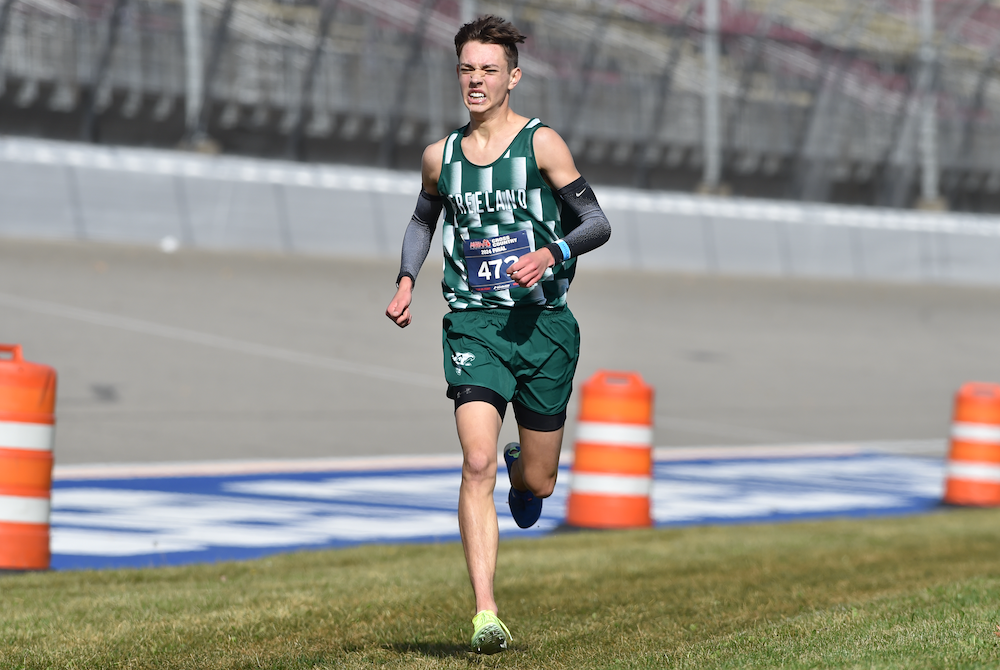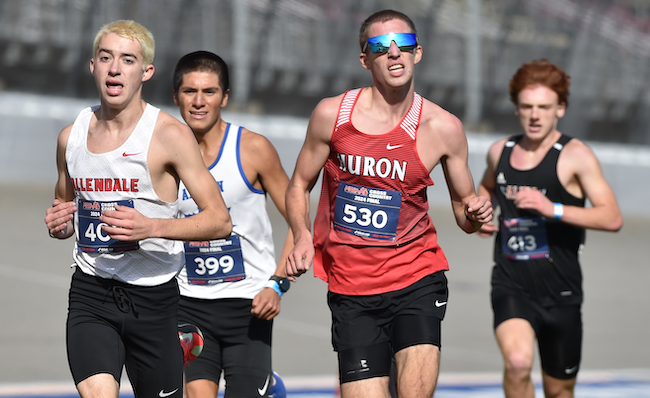
Classes Still Create Hoosier Hysteria
July 27, 2017
By Rob Kaminski
MHSAA benchmarks editor
This is the fourth part in a series on MHSAA tournament classification, past and present, that will be published over the next two weeks. This series originally ran in this spring's edition of MHSAA benchmarks.
Twenty years ago, Bloomington North High School won the Indiana High School Athletic Association boys basketball championship, defeating Delta 75-54 at the RCA Dome in Indianapolis.
The date, March 22, 1997, is at the same time revered and disdained by traditionalists in the state who saw it as the last schoolboy championship game the state would ever host.
That’s how devout the game of basketball, particularly interscholastic basketball, had become in the Hoosier state during the 87 years a state champion – one state champion, to be precise – was crowned.
Following that 1997 season, the IHSAA moved to a four-class system for its roundball tournaments, like so many of its state association counterparts had done years earlier.
It would be shocking to find more than a small percentage of current high school basketball players around the country unfamiliar with the iconic movie Hoosiers, even though the film is now more than 30 years old.
And, the storyline for that blockbuster unfolded more than 30 years prior to its release, when small-town, undermanned Milan High School defeated Muncie Central High School 32-30 in the 1954 IHSAA title game.
Perhaps it’s because of the David vs Goliath notion, or the fame of the movie that replaced Milan with the fictional Hickory and real-life star Bobby Plump with Hollywood hero Jimmy Chitwood, or the simple fact that Indiana had something other states didn’t.
Whatever the reason, plenty of opposition remains to this day to basketball classification in the state.
The fact is, the small rural schools were regularly being beaten handily by the much larger suburban and city schools as the tournament progressed each season.
Small schools also were closing at a rapid rate following the state’s School Reorganization Act in 1959, as students converged on larger, centralized county schools. From 1960 to 2000, the number of schools entering the tournament dropped from 694 to 381, and in 1997 a total of 382 schools and 4,584 athletes began competition at the Sectional level (the first level of the IHSAA Basketball Tournament).
It was at the entry level of the tournament where school administrators felt the pain of the new class system, but not necessarily for the same nostalgic reasons as the fans who either attended or boycotted the tournament.
At the Sectional round of the tournament, the IHSAA was culling just 2 percent of the revenue, with the participating schools splitting the balance. So, when Sectional attendance dropped by 14 percent in that first year of class basketball, many schools realized a financial loss. It was money they had grown to count on in prior years to help fund various aspects of the department.
Schools cumulatively received more than $900,000 from Sectional competition in 1998, but that total was down from more than $1 million in the last year of the single-class tournament.
Yet, the current format provides a great deal more opportunity and realistic chances at championship runs for schools of all enrollments.
To date, 60 additional teams have championship or runner-up trophies on display in school trophy cases around Indiana.
That was the mission in front of then-IHSAA commissioner Bob Gardner (now National Federation executive director) once the board made its decision: to give thousands more student-athletes the opportunity for once-in-a-lifetime experiences.
As any statistician knows, figures can be manipulated to tell any side of a story. Declining attendance in year one of class basketball is such a number.
The truth is tournament attendance had been on a steady downward spiral since its peak of just over 1.5 million in 1962. By the last single-class event in 1997, the total attendance was half that.
The challenge then and today, as it is for all state associations, is to find that delicate balance for those holding onto tradition, those holding onto trophies, and the number of trophies to hand out.
Editor’s Note: Stories from the Fort Wayne Journal Gazette in 1998 and from a 2007 issue of Indianapolis Monthly provided facts in this article.

Hansen Goes Distance Again, Allendale Claims 1st Final Since 1999
November 2, 2024
BROOKLYN — It looked like TJ Hansen of Freeland had gotten a big head start on the rest of the field, not that he needed it.
Hansen, after all, set the MHSAA Lower Peninsula Division 2 Finals record with his time of 14 minutes, 52.8 seconds last year.
But here he was, moments before the start of Saturday’s Division 2 race at Michigan International Speedway, nearly in a dead sprint 600 yards from the start rushing into the Freeland tent to quickly change his shorts.
The style of shorts Hansen was wearing differed from those of his teammates, a uniform violation that would have disqualified the reigning champion. After frantically rushing to get different shorts, Hansen was put in a cart and rushed to the start line.
There was no time to decompress.
“As soon as I got back, it was 10 seconds and, boom, the gun went off,” he said. “It’s just a lesson in dealing with adversity.”
For a few highly-stressful minutes, Hansen feared he would be on the sideline while someone else won a championship he was out to defend.
 “It kind of flashes before your eyes,” he said. “They tell you you’re DQ’d, and all those months of hard work seem like they flash before your eyes and all go to waste.”
“It kind of flashes before your eyes,” he said. “They tell you you’re DQ’d, and all those months of hard work seem like they flash before your eyes and all go to waste.”
When the gun went off, Hansen was back in his element and repeated as champion by lowering his Division 2 record to 14:50.5, the fourth-fastest time in any division at MIS.
He needed every bit of that effort, as Marshall senior Jack Bidwell took second in 14:57.3, a time that is the third-fastest by a Division 2 runner and 14th all-time in any division.
Hansen and Bidwell reached the two-mile mark together in 9:36.2 before the defending champion pulled away in the final mile.
“It was really just try to push the pace and see how fast I could go,” Hansen said. “My legs weren’t really feeling it today, so I changed up strategy to race to win.”
Hansen won 11 of 12 races this year, losing only to a runner from Tennessee on Oct. 5 in Indiana.
In the team race, Allendale won its first MHSAA Finals championship since 1999 by placing its five scoring runners among the top 29. The top 30 made all-state. The Falcons scored 78 points to win by 102 over 2023 champion Ada Forest Hills Eastern.
Sophomore Mason Hill was ninth in 15:24.0, senior Kilian Whalen 13th in 15:28.8, junior Ronnie Silveira 15th in 15:31.1, senior Ben Gross 27th in 15:47.1 and senior Parker Tiethof 29th in 15:48.3.
Allendale was fourth last year and returned its top six runners.
PHOTOS (Top) Freeland’s TJ Hansen pushes to the finish line in the Division 2 race Saturday after looking back to see Marshall’s Jack Bidwell also on the home stretch. (Middle) Allendale’s Mason Hill (403) and New Boston Huron’s Lucas Kuhn (530) race among the lead packs. (Click for more from Dave McCauley/RunMichigan.com.)

